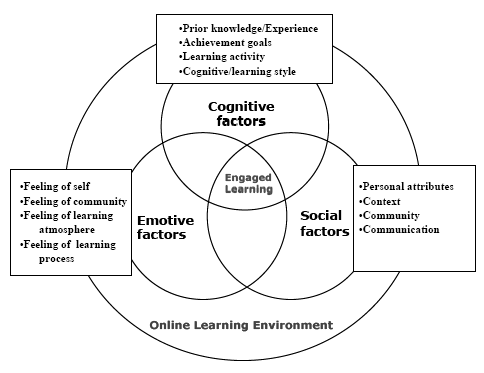Cybergogy: Difference between revisions
m (using an external editor) |
m (using an external editor) |
||
| Line 25: | Line 25: | ||
[[Category:Instructional design models]] | [[Category:Instructional design models]] | ||
[[Category: | [[Category:Pedagagogic strategies]] | ||
Revision as of 15:07, 21 November 2007
Wang, M., J., Kang, M. (2005). Cybergogy for Engaged Learning: A Framework for Creating Learner Engagement Through Information and Communication Technology. In E. M. S. Khine (Ed.), Engaged Learning with Emerging Technologies (pp. 225-253): New York: Springer Publishing.
The continued and growing need for new learning opportunities, linked with newer information systems and communication technologies, has pushed online learning into the center of the discussion of educational practice. There is a need to establish a framework for generating meaningful and engaging learning experiences for distance students with diverse cultural and linguistic backgrounds. We coin the term “Cybergogy” as a descriptive label for the strategies for creating engaged learning online. Our model of Cybergogy for Engaged Learning (see Figure 1) has three overlapping/intersecting domains: cognitive, emotive, and social. This model is a synthesis of current thinking, concepts, and theoretical frameworks on the extent and nature of the three domains in learner engagement online. The instructors can use this model to profile each learner and then design tactics to engage individuals accordingly, a process we call “customized engagement.” As a consequence, learners will not only have the opportunity to accomplish their learning goals, but also will be actively involved in the learning process.
Cognitive Presence Social Presence Emotional Presence
